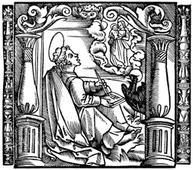As a resident of Hawaii most of my life, one of the conversations that I have often had with visitors was about what to see when they came to Hawaii. I would tell them to get out of Waikiki, to be sure to visit Hanauma Bay early in the morning, and to try our local plate lunch, among other things. Hawaii is a great place to visit anyway, but hopefully my tips made the trip more enjoyable.
I do something similar when I talk to people about the Gospel of John. John is a beautiful book that will bless and delight; but I have some tips that I hope will add to the reader’s enjoyment. Here they are – six questions that make up my traveler’s guide to the Gospel of John.
1. How does this scene “flash back” to ideas introduced in John’s prologue (John 1:1-18)? Every scene in John demonstrates at least one of the key ideas about Jesus from the prologue. Here are just a few examples.
- Jesus as the divine Word. Jesus often acts or speaks in the role of God; in John 5, Jesus is the one who will raise the dead and sit as judge.
- Jesus as the source of life to those who believe. This is perhaps the most ubiquitous theme in John. Jesus asks Martha to believe and experience life both in herself and in Lazarus (John 11:25-26).
- Jesus as the Light, the source of truth. The story of the blind man (John 9) is about accepting or rejecting the truth about Jesus.
- Jesus as the one misunderstood and opposed by the “darkness.”Almost every scene includes misunderstanding. The crowds believe that Jesus cannot be the Messiah because he is from Galilee, not Bethlehem (John 7:41-42, 52). This is a double misunderstanding, since Jesus is from Bethlehem, and more importantly, he is “from above” in John.
- Jesus as the one who came in the flesh, who experienced full humanity. Jesus weeps, gets hungry, thirsty, tired and angry in John.
2. How does this scene foreshadow Jesus’ “glorification,” his death, resurrection and ascension?Almost every scene in John has some reference to the glorification, the lifting up, or the coming hour. That hour would bring true worship (John 4:21-24), the reception of the Spirit (John 7:37-39), and the drawing of all people to himself (John 12:23-24, 31).
3. Are there any repeated sayings or final sayings in the scene that help explain the meaning of the scene? At the healing of the nobleman’s son (John 4:46-54), John tells us twice that the man be
 Ŕ¶Ý®ĘÓƵ
Ŕ¶Ý®ĘÓƵ